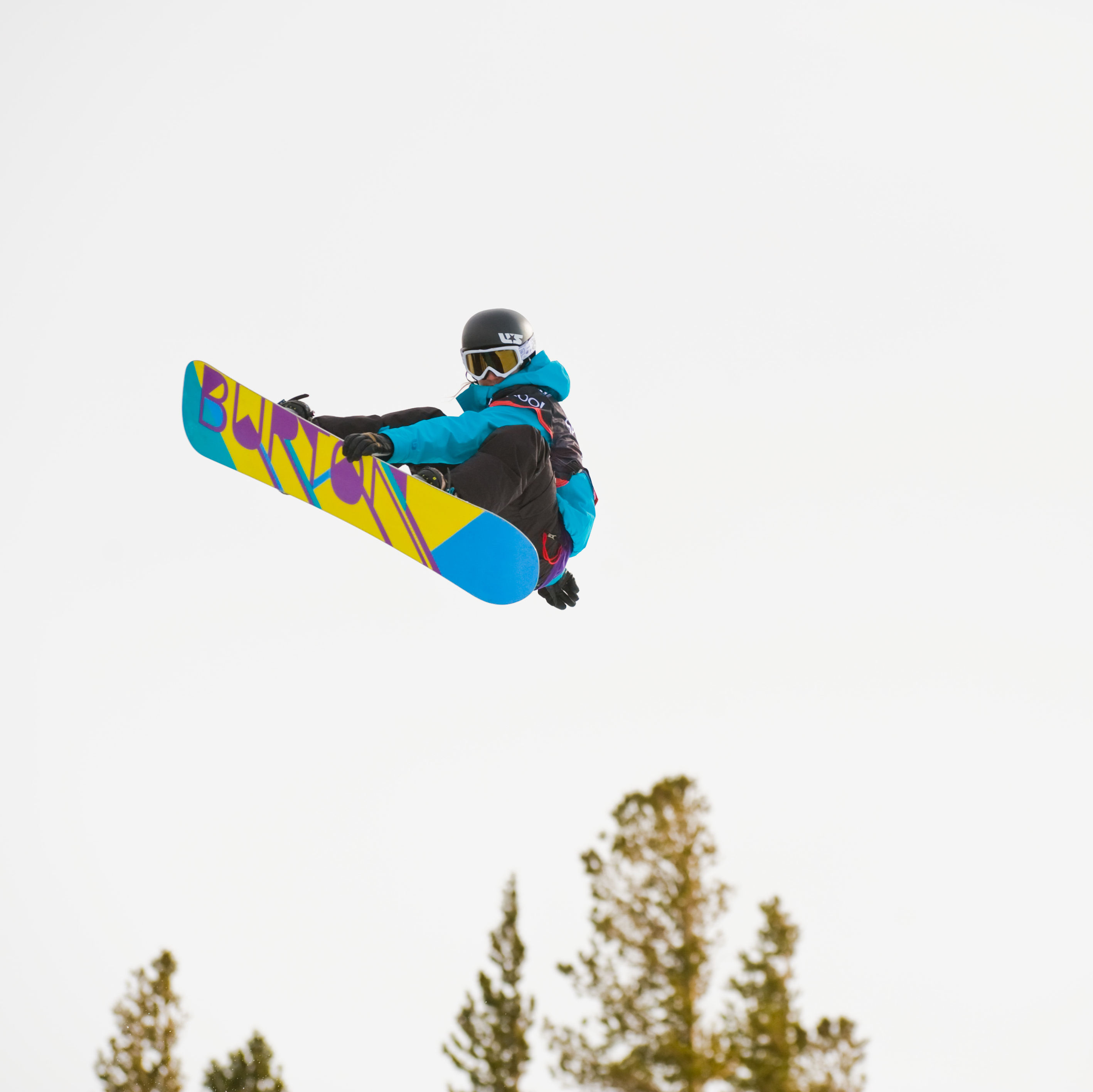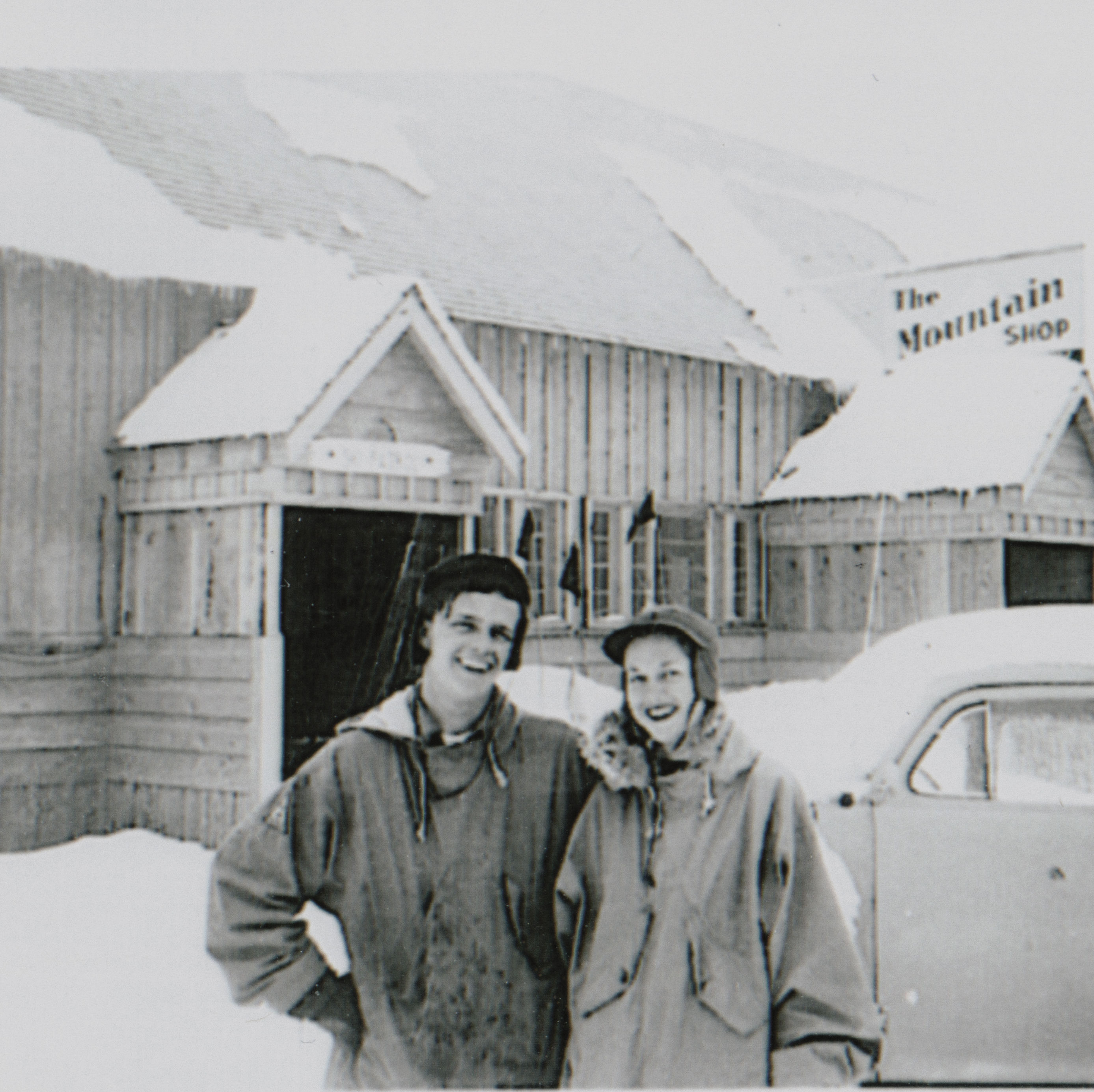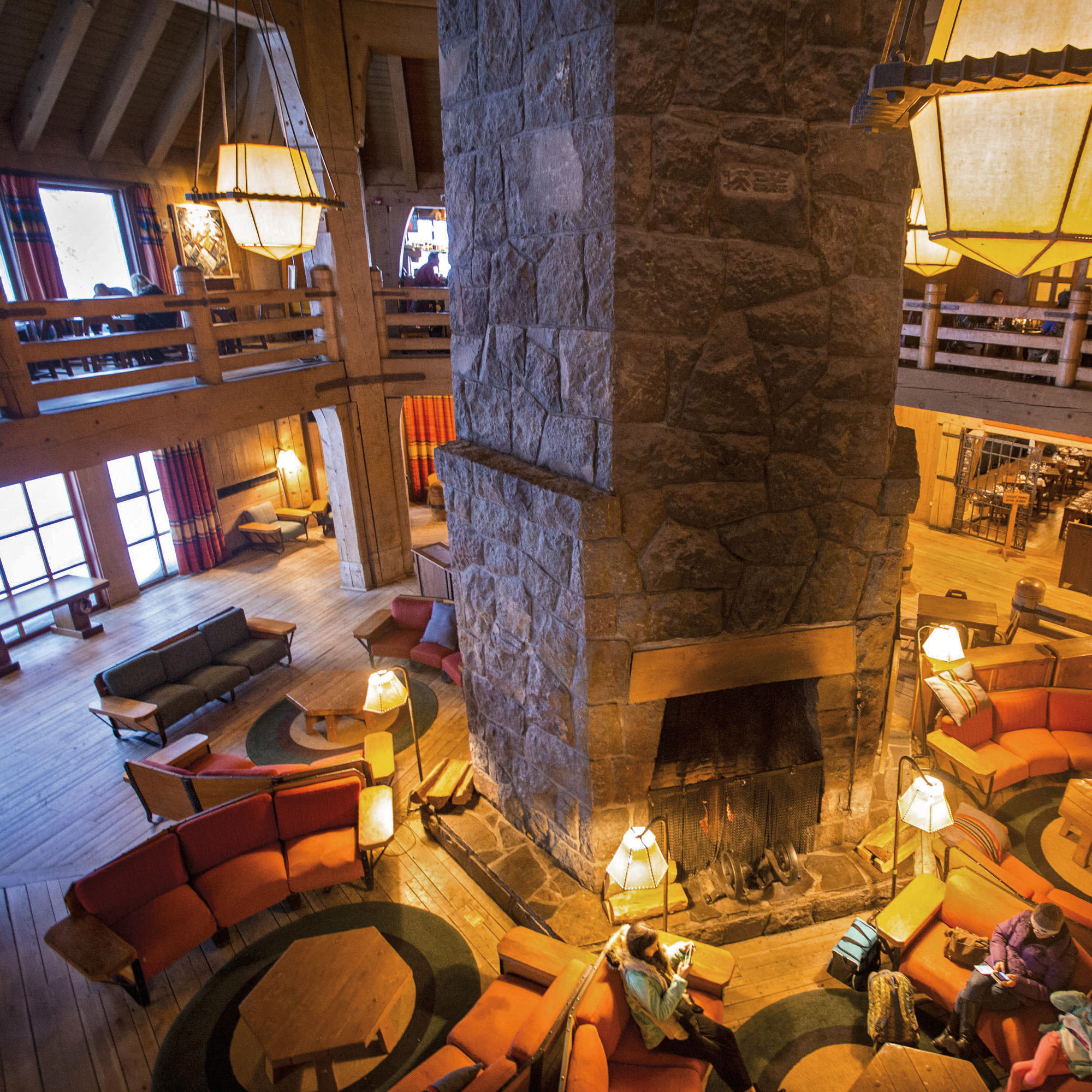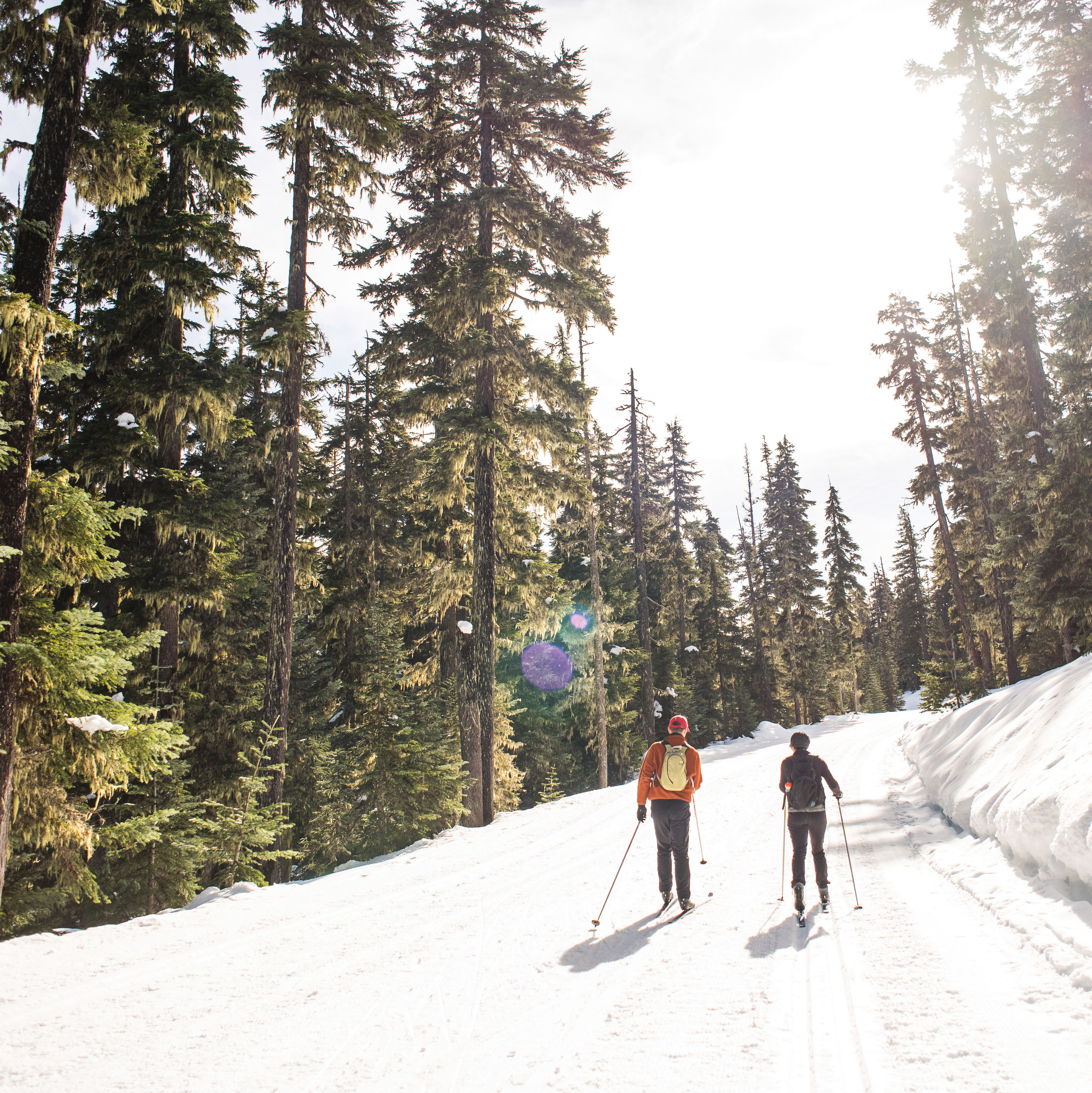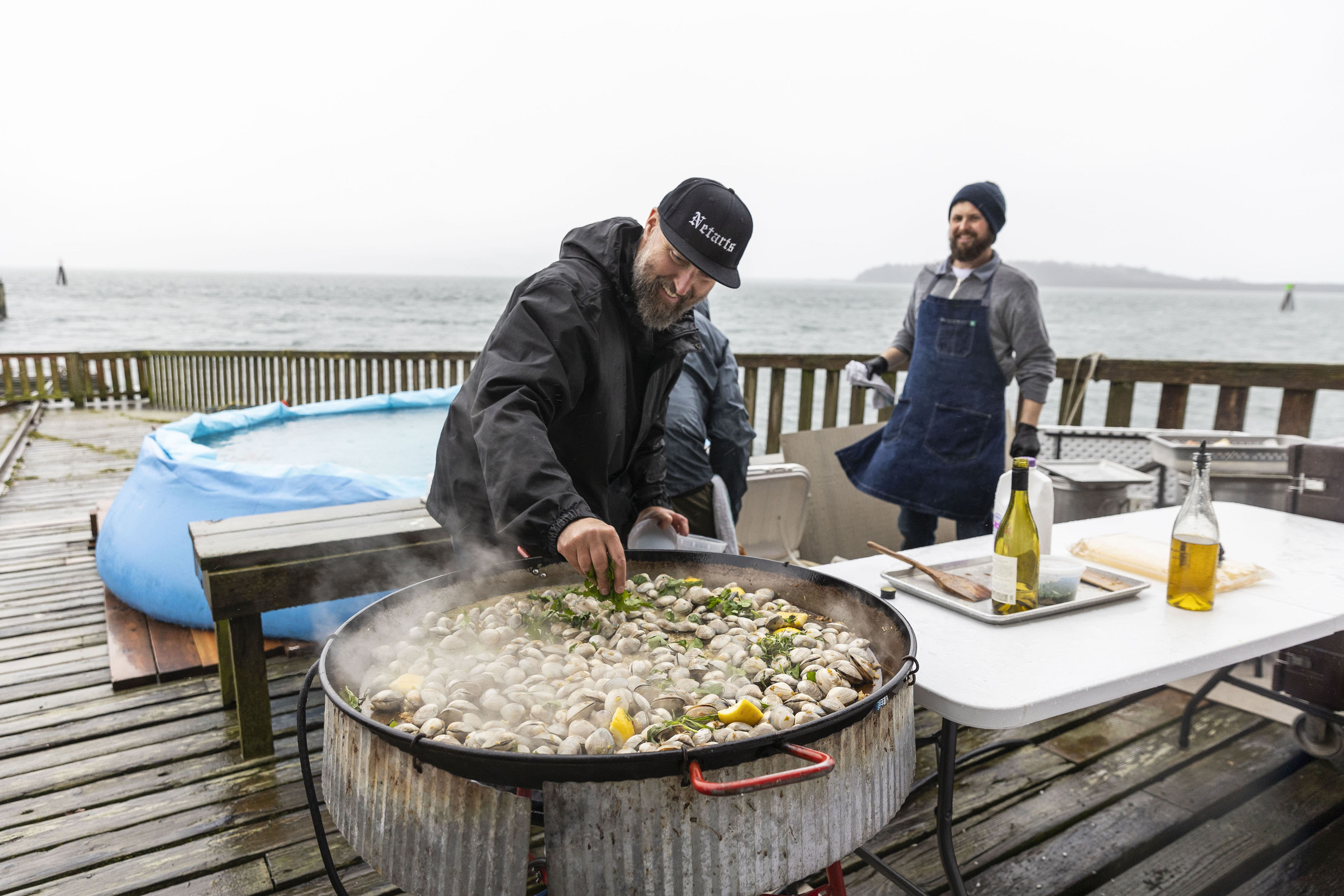America's Longest-Serving Ski Patroller Works on Mount Hood

Buzz Bowman with his future wife, Dolores, at Government Camp in 1948.
Image: Courtesy Buzz Bowman
“Back in the ’40s, there weren’t any ski areas open, because of the war. We used to take the Trailways Bus going to Bend. When they were loading the bus from Portland, it was people first, then skiers; we would end up standing all the way to Government Camp. You would take a bus or hitchhike up to Timberline, which was closed during the war, then ski the trail back down to Government Camp. The Mount Hood Museum reenacts that system once a year, during “Ski the Glade.” I remember when we used to do it for real.
We organized a ski bus that would pick up 25 kids near Lincoln High School on a Sunday or Saturday morning to take us up skiing. One year, one of the girls that used to come regularly brought her sister. That particular week we had the biggest snowstorm. The bus got up to Timberline Lodge and got snowed in. But we had already skied down to Government Camp. They still call it a village now, but it was really a village then. We ended up sleeping on the floor of the bus depot, the Battle Axe Inn. My wife (the sister) and I got acquainted then.
My buddy at Lincoln had a neighbor in the 10th Mountain Division, and we admired him, so we joined the Ski Patrol. At that time the standards were pretty low—you didn’t have to be as good a skier as everybody else. Back then, anybody that skied was considered a daredevil. My badge number is 134; right now, they’re handing out badges up in the 1,600s.
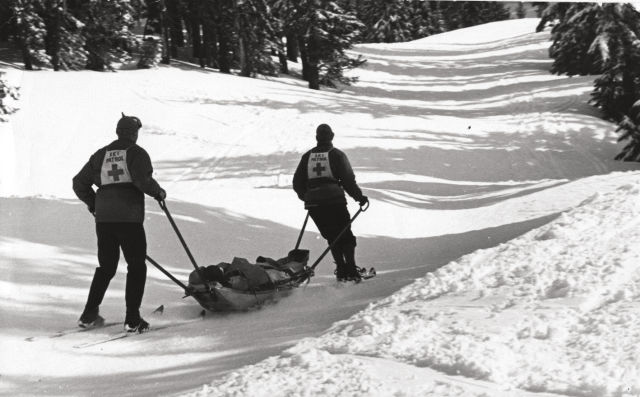
Two patrollers escort an injured skiier.
Image: Courtesy US Forest Service
In 1947, when I was in high school, I joined the National Guard. I had to lie about my age: I was 17, and you were supposed to be 18. I started as a truck driver—that’s why we joined, so we could drive those big army trucks. I stayed around and kind of outlived everybody. Retired as a colonel in 1989.
I was stationed up in Alaska because of my Ski Patrol experience. Our brigade in Oregon got the mission of defense of Alaska, because that’s where the petroleum preserves were during the Cold War, near Kotzebue. By then I was a major, and the only senior officer that knew anything about cold weather. I had the privilege of taking 500 Oregon Guardsmen up to the Arctic to train. In winter, it’s 84 below zero up there. We taught them rock climbing, how to maneuver on a glacier, and in the rivers during the summer.
[The Ski Patrol] is sort of like family ... sort of like the military. You have a job, and you do it mostly because of the guys you’re working with, not looking at the overall picture, so to speak. The people that were patrollers back in the late ’40s and early ’50s—basically it’s the same people that are there now, except they’re different faces, but the same type of person."
